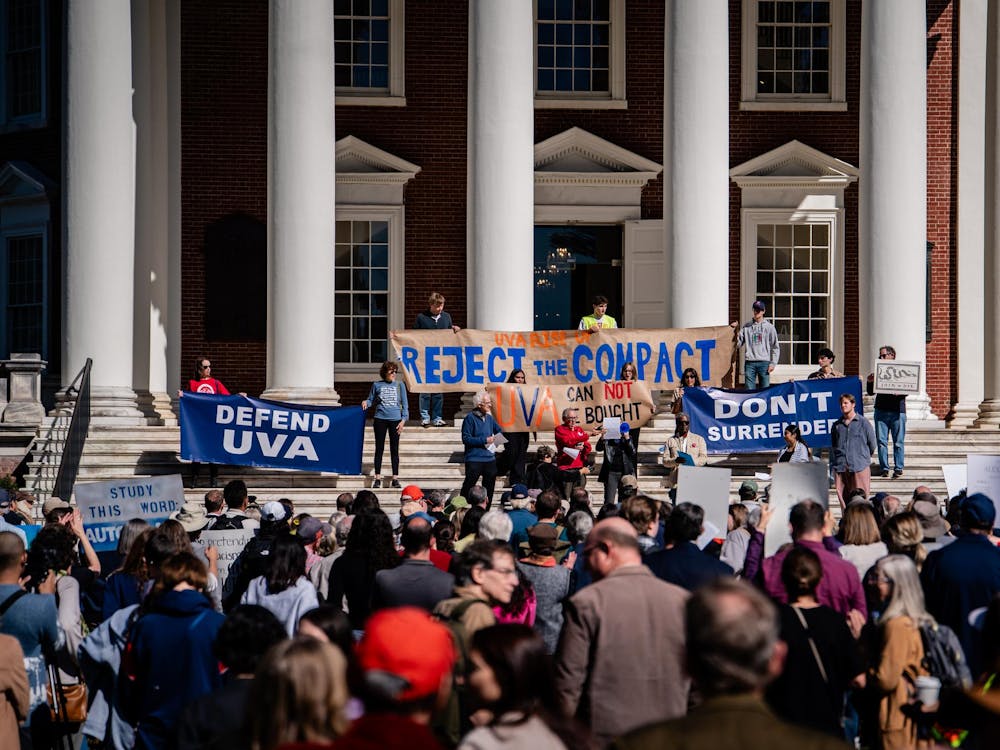COLLEGE is supposed to be an environment of enrichment and challenge, a place where students of all backgrounds can come together to learn and to interact with the community around them. Too often, however, this environment is tainted by a belief that minority groups and under-represented communities exist on Grounds for the sole purpose of educating others about their culture, whatever the term culture implies.
Recent efforts by both First Year Council and Second Year Council to invite minority organizations to participate in events focused around diversity are the latest two examples of this popular mode of thinking. In an e-mail to the Afghan Student Association, for example, First Year Council asked ASA to display information about their culture and to provide a "short performance" on stage at an event they are calling Diversity Day. Apparently, a poster board and a two-minute appearance on stage are supposed to "raise awareness about diversity on Grounds." Similarly, Second Year Council invited the same CIO to "show a wide and diverse group of students what you do!" By this logic, then, all ASA does is be Afghan and dance.
Though I am sure the actions of the two councils were well-intended, their efforts nevertheless highlight what is wrong with the way words like diversity and culture are used on Grounds. ASA is not the only group subjected to this kind of thinking. Cultures are not easily delineated entities, nor do they exist to be displayed or ogled at.
Asking someone to perform a traditional dance on stage or cook a traditional meal for others to share is not the way to gain an understanding of an individual's background, whether cultural or personal. The expectation expressed in an invitation like Diversity Day is for the "minority" to enrich the "majority" audience by somehow showing them a piece of the minority culture. The councils are implicitly presenting themselves and their constituency as a white majority audience and characterizing those who are meant to perform as the "other." Groups made up of traditionally under-represented students are often characterized as the ones who possess this ambiguously defined, mystifying idea of culture, whereas the white majority is simply the culture-less norm. Operating under this mode of thinking, class councils are more or less asking members of various student communities on Grounds to enrich them by making them feel more tolerant.
Dances and food are great attention grabbers, but they are far from indicative of the history and values of a cultural or ethnic group. Additionally, clustering all individual members of a specific racial or ethnic group into some sort of pre-packaged version of what it means to be Afghan, or African American, or Jewish is extremely essentialist and close-minded. ASA President Henna Ayub pointed out that her CIO is not even a performance-oriented student group. "We focus on bringing movies and panels and speakers to the school to increase the awareness around grounds of Afghan culture," she said in an e-mail.
Instead of expecting cultural enrichment to come in the form of a condensed, five-minute summary of an otherwise complex and multi-layered cultural history, class councils need to find more productive ways of recognizing the multiple perspectives of every student at the University. This means discussion and education, outreach as well as introspection.
Katelyn Mendoza, a third-year in the College and a member of Third Year Council, said, "Class councils already have the stereotype of being under-representative of the different communities we have at this University, its members mostly consisting predominantly of white Greeks who have been there since first year." She added, "It gets extremely frustrating when an organization has so much potential but others can't seem to look beyond themselves to provide the exceptional service that we know we can for our class."
Finally, Ayub noted the lack of willingness shown by class council members to attend and promote events planned by minority and cultural CIOs themselves. If true dialogue involving all student communities is the aim of class councils, then more of an effort to participate in events like speakers, panels and discussions must take place. Cultural awareness is not about dancing or eating, but instead about engagement and being aware of issues of under-representation and identity. It is not about feeling aware, it is about being aware. It requires moving beyond tokenism and essentialism in pursuit of lasting dialogue and engagement.
Amelia Meyer's column appears Fridays in The Cavalier Daily. She can be reached at ameyer@cavalierdaily.com.






